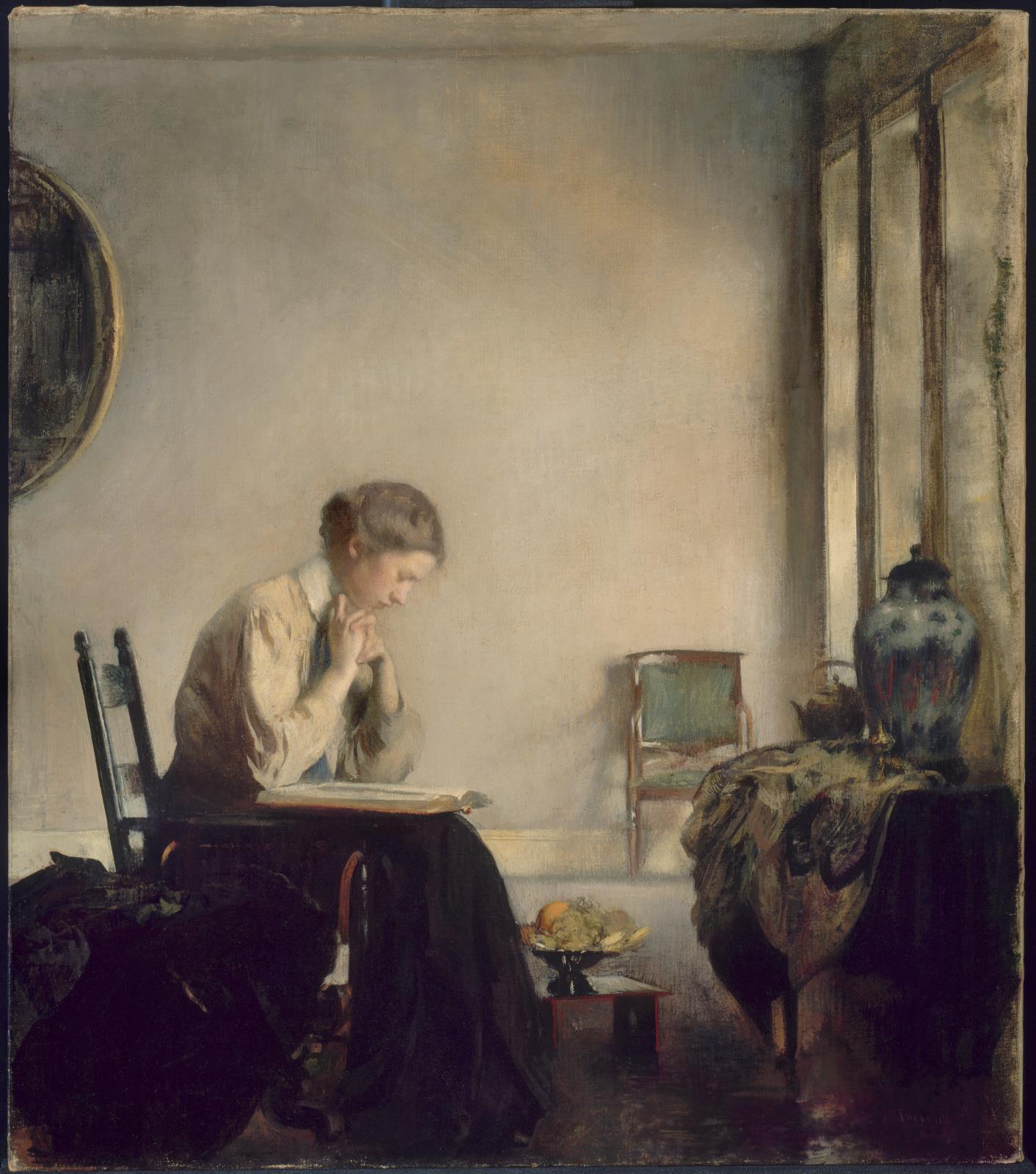The New England Interiors of Edmund Tarbell
Last weekend I took my offspring to the Museum of Fine Arts, in Boston. We each had something we wanted to see. My daughter wanted to see the Buddhas in the Temple Room, a tremendously evocative space, I wanted to see the wonderfully named Boston Green Head (a story for another time), and my son, as always, wanted to see the late 19th/early 20th century American art.
And there, I discovered an artist I had overlooked before, Edmund Tarbell (1862–1938). He painted portraits, and a lot of New England interiors. Clearly influenced by Vermeer, he showed interiors much more elegant and spare than one thinks of as characteristic of the late Victorian era, all ormolu and hippopotamus-foot umbrella stands.
The luxury of space. But he has kind of stolen Vermeer’s window.
Here is the one that struck me first, called, with no particular originality, "New England Interior". The light streams through the windows, a cold northern light, shining on the acquisitions of world trade, and doors are open to other rooms, all just as in Antwerp so many centuries before. The elegance and clarity of the space are striking.
Paradise: a good book, good light, and no distractions
Then, one of a common topic, a woman reading. The artists of this school, called the Boston School, loved the Eros of intellect, as do I. Again, a spare elegant interior, cool light, and prestige items of great beauty.
Luxury is not having to have too much stuff
He also loved reflective floors. Here is one from the Met, called "Across the Room", that shows that to full effect.
I hope he didn’t make her stand around like that when he wasn’t painting
Interiors decorated by austere women who don't care we are there was a big theme for the era, or at least a fashion. I like it a lot, and to the extent that I have any acquisitive tendency, it would be directed at paintings like these. Another practitioner was the Danish Vilhelm Hammershøi (1864-1916)—the MFA does have one Hammershøi, which, since it was European, I missed. He also decorated rooms with women, but did not like them as much as Tarbell did. He showed them only from the back, as in "Interior with Young Woman Seen from the Back" (1904). If he'd really cared about this woman (probably his servant, he used her and his wife for a lot of paintings), he would have spent a bit more time on her cervical vertebrae. Though maybe that would have led to trouble in other the rest of the composition. It is an incredible painting, it's no wonder he's so popular.
In general, what strikes me is the proportions of these interiors, their well-chosen furniture and decorations, and the clarity of the natural light. Now, clearly, these were interiors that belonged to men with a distinct aesthetic sense. I'm not much on interior decoration, but these rooms inspire me more than any spread I see in Architectural Digest.
Who is your favorite painter of interiors?
And have they inspired you to do anything about your own surroundings?



